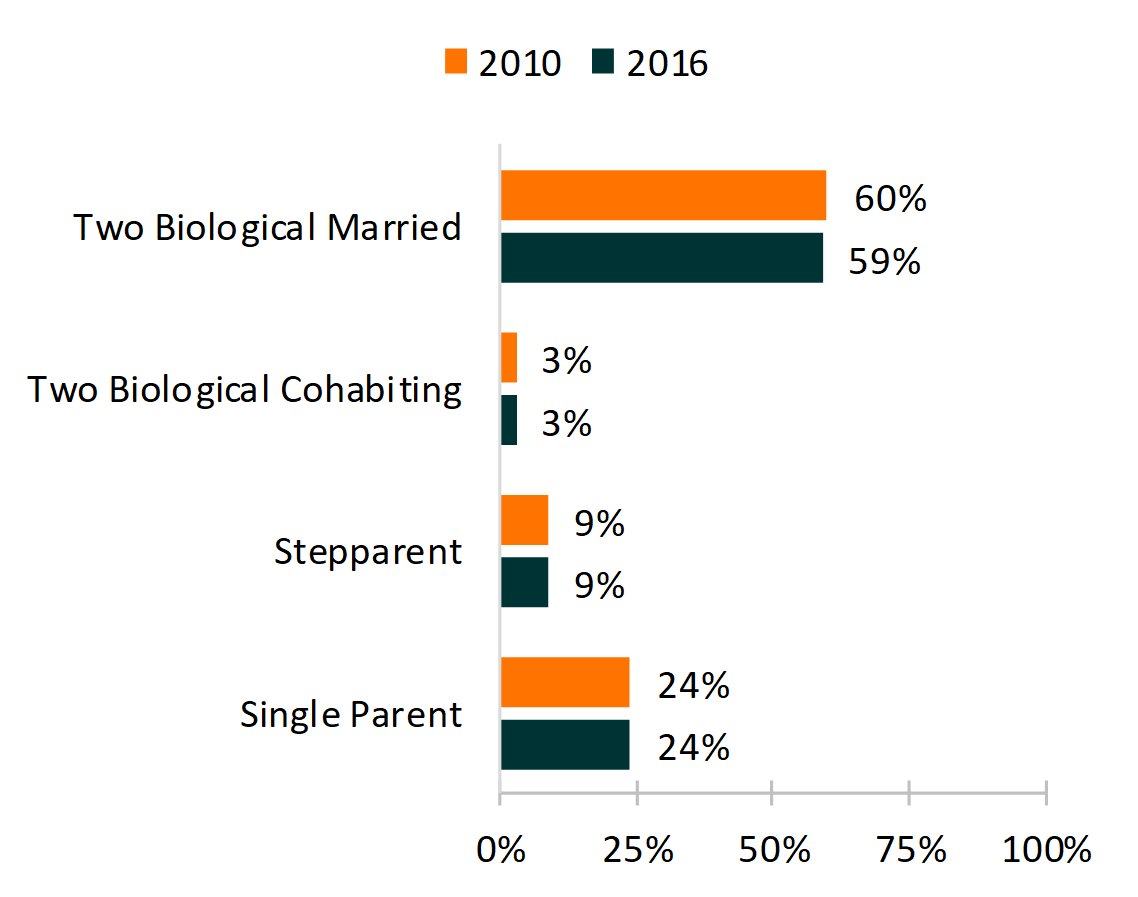The Atlantic issued a correction Thursday to a piece published on Tuesday outlining the apparent rise in tri-parenting arrangements and chronicling the path of an asexual activist in northern California who started a family with another married couple without dating.
In an effort to normalize tri-parent cohorts, the piece first misreported that less than half of American children were living in two-parent homes, based on a Pew Research Center study that stated the opposite.
“The idea that the default family unit consists of two straight parents and their children is outdated and doesn’t reflect the U.S. today,” New York writer Angela Chen first wrote for the magazine. “One 2014 Pew Research report, for example, found that fewer than half of American kids lived in this so-called traditional family environment. Divorce and remarriage are more common than they once were, as are blended families and stepfamilies – many of which feature a third parental figure.”
The 6-year-old study from the Pew Research Center however, showed that 46 percent of these children were living with two heterosexual parents in their first marriage. Another 15 percent reported living in two-parent homes where either one or both had been remarried bringing the total to 61 percent, far more than half.

The Atlantic issued a correction two days after publishing:
This article previously mischaracterized the proportion of American children who live in specific family arrangements.
Here’s how the magazine article reads now, which in turn, attempts to discount children living with remarried parents:
The idea that the default family unit consists of two straight parents and their children is outdated and doesn’t reflect the U.S. today. One 2014 Pew Research Report, for example, found that fewer than half of American kids lived in a so-called traditional family environment, with two married parents on their first marriage. * Divorce and remarriage are more common than they once were, as are blended families and stepfamilies – many of which feature a third parental figure.
Consequent analysis of the same data relied on by the Pew Research Center, the American Community Survey (ACS) which is the largest annual social survey conducted in the U.S., have shown the number of two-parent households have actually ticked upwards in recent years.
According to an Institute for Family Studies analysis of the 2018 ACS, percentage of American children in two-parent homes rose from 61 percent to 62.3 percent
https://twitter.com/WilcoxNMP/status/1309134354967343107?s=20
More data from Bowling Green State University shows two-parent family structure has remained the norm since 2010, where more than half of the nation’s children have consistently lived under such an arrangement

According to a congressional report from the Joint Economic Committee, the numbers for children living in two-parent households is even higher at 70 percent.









